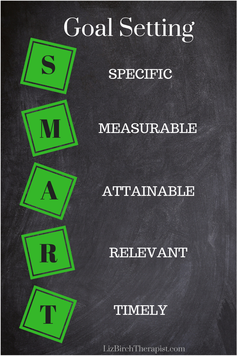 What is your inner child telling you? Do you want everyone to cater to your needs? Do you find yourself disappointed a lot? Do you have a lot of fear... anxiety? The idea of having an inner child may be foreign to most people. But all of us have a part of us that's still us as a child. It's possible that our inner child never fully grew up or may not be fully healed from pain in the past. Think about your current life and all the emotions and behaviors that you don't like and are continually trying to change. These emotions and behaviors come from our experiences from when we were small children. From birth to about 6 or 7 years old, our brain functions at a relatively slow pace, which is a very "receptive" brainwave state. At this time we are profoundly affected by our life experiences. Our beliefs about ourselves and others are formed during this time based on our life's experiences. As small children we will have been absorbing a great deal from our extended families, our caregiver(s), friends, religious institutions, etc. Our experiences may have been filled with love and support or they may have been filled with neglect and abuse. Our subconscious takes in all this information and holds on to it for the rest of our lives. We cannot change the script. The life we experienced happened, whether good or bad, it happened. And that script, how our brain processes our events, is designed to keep us safe. Hence, anxiety to keep us on the lookout for danger (as an example). All of our life experiences have been "logged" into our sub-conscious minds and bodies. This all creates the pool in which we float, or sink. Inevitably, the water will be a bit dirty - or it may even be like thick mud. In this pool is our self-esteem, body-image, family trauma, shame and secrets (even if not spoken about). We sink down into this pool, or mud, whenever we are overwhelmed by our negative thoughts, emotions, self-doubt or self-loathing. In therapy the aim is to sensitively lift out this dirt/mud, bit by bit, until we are left with just a stain of what was once there. In therapy you can learn how to meet, rescue and “adopt” this wounded child who still lives deep inside you. This process of meeting, rescuing and adopting your wounded child is an amazing process. Any why you? Because you are the only person who you can guarantee never to leave you! Signs that your Inner Child may be wounded: low self-esteem, poor body-image, mood and emotional imbalances, problems with boundaries being too rigid or too weak, problems with eating, harming yourself, being a rebel/ a hoarder/ a bully/ a perennial victim or a super-achiever, intimacy problems, commitment problems, a general lack of trust in yourself and others, criminal behavior, excessive lying, just to name a few. If you are in Orange County, California and interested in working on your Inner Child please feel free to reach out to me. We can begin with a free 15-minute consultation and go from there. Or you can reach out to any therapist in your area and ask if they do Inner Child work. I wish you all the best! I am a licensed Marriage & Family Therapist who can provide services with anyone who resides in the State of California. I have also been trained in Clinical Hypnotherapy which is beneficial for more specific goals.
Liz Birch, LMFT, CHt ~ 714-584-6047 ~ [email protected]
0 Comments
 Let me begin by saying Hypnotherapy is not a type of therapy in itself. However, it is a great aid to Cognitive Behavioral Therapy. Cognitive Behavioral Hypnotherapy, which combines hypnosis with cognitive-behavioral therapy, helps change unwanted patterns and behaviors by connecting with the subconscious mind. It helps with psychotherapy because the hypnotic state allows a person to explore more painful thoughts and feelings that may be hidden from the conscious mind. The positive suggestions that people are given while hypnotized are referred to as “post hypnotic suggestions” because they are intended to take effect after the person emerges from the deep relaxation or trance and is no longer under hypnosis. Experts say that hypnotherapy can help the "stuck" thought patterns that go along with depression, anxiety, OCD, and other mood disorders. The fact is, however, that hypnosis is a genuine psychological phenomenon that has valid uses in clinical practice. Simply put, hypnosis is a state of highly focused attention or concentration, often associated with relaxation, and heightened suggestibility. While under hypnosis, it seems many people are much more open to helpful suggestions than they usually are. "Hypnosis works and the empirical support is unequivocal in that regard. It really does help people," says Michael Yapko, PhD, a psychologist and fellow of the American Society of Clinical Hypnosis. Hypnosis has been used for centuries for pain control, including during the Civil War when Army surgeons hypnotized injured soldiers before amputations. Recent studies have confirmed its effectiveness as a tool to reduce pain. Among the leading researchers in the field is Guy H. Montgomery, PhD, a psychologist who has conducted extensive research on hypnosis and pain management at Mount Sinai School of Medicine, where he is director of the Integrative Behavioral Medicine Program. In a 2009 article in Health Psychology (Vol. 28, No. 3), Montgomery and colleagues reported on a study, which found that a combination of hypnosis and cognitive-behavioral therapy could reduce fatigue for breast cancer patients undergoing radiation therapy. Hypnotherapy is a safe procedure when done by a trained therapist. Hypnotherapy is not mind control or brainwashing. Hypnotherapy is specifically designed to fit your needs. This means that each hypnotherapy session is designed for just you and allows for a very individualized approach. The reason that hypnotherapy can be so effective is because it is so person centered. If you have tried other treatments and not seen results, you should give hypnotherapy a try due to the fact that it is so person centered. Check with your insurance company to see if they specifically cover hypnotherapy.
 Many of us have great intentions of reaching our goals. We may tell ourselves; "I'm going to work out more, I'm going to increase my sales this month, I'm going to work on home improvements this week, or I'm going to begin drinking less alcohol". All of those are great goals, however, it's too easy to not reach any of those goals if we phrase them as I wrote them. In order to be more successful in your goals you must get much more specific than the examples I listed above. A great system to use is the SMART goal setting system. SMART goal setting brings structure and traceability into your goals and objectives. SMART goals create clear milestones and an estimation of the goal's attainability. What does S.M.A.R.T. goal setting stand for? S = Specific
Being a therapist, I use this SMART system with many of my clients. I help them get very specific on what they want to accomplish in therapy. This may take a few sessions to figure out but it's important to clarify the goal. To have someone say, "I want to feel better about myself" is good, but it will be too difficult to know when my client will be there. So I dig a little deeper and ask my client, "What does that look like to you?" After some exploring my client may say, "Instead of crying 4 days a week, I want to work on only crying 2 days a week". That's very specific and attainable. We work on that goal and after a month or so we revisit the goal. Is the client crying less? How many days a week are they crying now?" Once they've reached crying only 2 days a week we set our next goal. How about crying only 2 times a month? Again a specific goal. This system works well when working on communication issues in relationships. A couple may argue every single day. So our measurable goal may be that they argue only 4 days a week. Of course, we don't want arguing at all, but is that realistic? Attainable? We set goals that we can be successful with. Once that goal is reached of only arguing 4 days a week we set a new goal of only arguing two days a week, and so forth. During the sessions, while working on goals, the therapist is exploring with the client what got them in their predicament. What changes need to be made and how can some of their problems be resolved. It's all a work in progress all striving for those specific, measurable, attainable, relevant, and timely goals. Why don't you think about a goal or two you'd like to reach? Then apply the SMART goal setting approach and see if that makes reaching your goals a bit more successful. I bet you'll be pleased with your results. If you are in my area and need help reaching your goals, please feel free to reach out to me and together we can work this system. It may take just a few sessions to get you set up and going. You can then check back a month or so later and we can explore how you are doing. My hope is for everyone to be successful in their goals, no matter how small or large. I am a licensed Marriage & Family Therapist who can provide services with anyone who resides in the State of California. I have also been trained in Clinical Hypnotherapy which is beneficial for more specific goals. Liz Birch, LMFT, CHt ~ 714-584-6047 ~ [email protected] https://en.wikipedia.org/wiki/SMART_criteria
 One of the most common struggles that people come in to see me for is learning the art of letting go of the past. Many are stuck thinking about the wrongs that have been done to them and they are angry, frustrated, hurt, and sad. The unfortunate part about hanging on to those feelings is they continue to hurt and harm those that we love. That could mean hurting others that weren’t involved in the past misfortunes. So let’s take a look at those past feelings. Those feelings aren’t really the past, they are the present. You are presently feeling angry, frustrated, hurt and/or sad. And it’s those feelings that are keeping the past alive. What I first like to do with clients is to fester out all that the person is feeling, such as, anger, frustration, hurt, sadness – or any other feelings that they are experiencing. Example – Client: “I am angry that my parents worked all day and I was left alone to fend for myself”. Therapist: “You are angry that you were left alone?” Client: “Yes!” Therapist: “Tell me more about that anger.” Client: “They should have been there for me!” Therapist: “Tell me what it was like to be alone.” Client: “I had no one to talk to, I was bored, at times I got scared.” Therapist: “So you were scared to?” Client: “Of course I was scared, I was just a kid!” Therapist: “Let’s talk about you feeling scared.” Client: “I was scared because what if someone tried to come into my home when I was alone?” What if I got injured and no one was there?” “Why didn’t they care enough about me to be home with me?” Therapist: “What I heard you say in the beginning was you were angry because you were left alone but I’m also hearing you were frightened and you felt your parents didn’t care about you.” Client: “Yes, I guess, I feel they must have not cared about me so they left me alone at home.” So we move from just being angry to actually carrying around a feeling that the client’s parents’ “didn’t care”. The above is just a short snippet of working through feelings and there’s more involved. It’s a process of several sessions to fester everything out. It’s like peeling an onion and working through all the layers by identifying all the feelings that were experiences. As we identify all that had happened, it’s validated. I hope this gives you an idea of how to pull out all the feelings. I don’t want anything ignored or left out. I want to hear about the experiences that are causing so much pain. But what do we do about them now? Experiences of the past need to be validated and never brushed off. Events happened and the feelings of the past are real. I spend time with clients letting them “feel” all that they have identified. That could mean they sit in sadness, anger or grief – but just for a limited time. We then move on. Now we get to the part where we let it all go! Memories are just thoughts and thoughts have no power – unless the person chooses to give it power. Some thoughts stick with us, we react to them, and we keep thinking about them. Ugh! To keep thinking about them serves no purpose. Some things you shouldn’t do: • Make yourself forget about the past (you can not forget it) • Stuff or ignore your feelings • Wait for an apology or acknowledgment (if you never get an apology you will always sit in pain) • Wait for time to heal all wounds • Change the past (you can’t change what happened but you absolutely can change your reaction to what happened) As a Cognitive Behavior Therapist I talk to my clients about how our feelings control our behavior. If you stay with anger, hurt and sadness, then they will become your reality. As an alternative, be open to moving forward. Prepare yourself to feel differently. Contemplate not defining yourself by thoughts about the past. Keep in mind, what you focus on, will become your present. Many have been telling themselves their unfortunate life circumstances so many times that they aren’t allowing positive thoughts to come in. These negative thoughts keep you distracted from moving forward. Some stuck thoughts that people hold on to: • “I want to stay stuck because I was wronged.” • “It is someone else’s responsibility to make this better for me.” • “If I let go, I’m somehow approving another person’s bad behavior.” • “I need an apology.” • “Life is unfair.” Holding on to those thoughts, the constant reminder, will only keep your unfortunate experiences in the present. How you feel is your responsibility, no one else’s. Once you realize all the power that you have, you can begin the process of letting go. Holding on to the past is like wearing a pair of shoes that are a bit too small for you. You can get your feet into them but they hurt like heck. It’s time to take them off and begin to enjoy comfort again. Remember, you are in control of how you feel. Begin by thinking more positively. But it might not be so easy at first. You have to reinforce those positive thoughts and behaviors so they will stick. As with any sort of training, the more you practice, the better you get—and, yes, you can practice being positive. Live for today. Live for and look for the positive in others. Embrace the positive aspects of your parents, spouse, children and friends. When you start feeling like the idea of being a positive person is daunting, remind yourself that all it takes is one small step in the right direction to move yourself toward a more positive attitude. Believe in yourself and remember the most important lesson of all: A positive outlook is a choice that you can always make. I am a licensed Marriage & Family Therapist who can provide services with anyone who resides in the State of California. I have also been trained in Clinical Hypnotherapy which is beneficial for more specific goals. Liz Birch, LMFT, CHt ~ 714-584-6047 ~ [email protected]  We set goals for ourselves, have big plans, can feel the success, the excitement is there, we’re off and running to a good start and then it all slowly peters out. Now the frustration sets in and we begin to tell ourselves we can’t succeed. Wrong! You can succeed! All you need is a better action plan. Staying motivated is partly the secret to reaching our goals. No matter what our goals are or how detailed we make them, if we can’t find the motivation to take consistent action, success will be difficult. However, if we can stay motivated and push through the tough times, breaking those bad habits that hold us back, well, anything is possible. Multiple research studies have shown that many entrepreneurs will average a 3 – 5% failure rate for every success. But, they didn’t give up. They pushed through their weaknesses and eventually succeeded. That took motivation on their part. Without the same motivation, that they had, we get stuck in neutral, and then become filled with regret, anxiety and fear. Below are some strategies that will help you to keep your motivation going so that you can achieve your goals. 1. No Distractions This seems obvious but most of us feel that having our cell phone nearby, the Internet or a tv/radio running in the room won’t cause a problem but that’s far from the case. Shut everything off! There is no urgent need to check Twitter or Facebook for the latest happenings! If it’s on and nearby you will do that. Keep it all off. 2. Find a new Location Don’t work where familiar distractions will thwart your effort to work. Go to a coffee shop, the library, the conference room at your work or a table at the park. By moving to a different location there is nothing handy for you to grab, read, or turn on as a way to escape your work. 3. Don’t Procrastinate This isn’t an easy one. People tend to put off what they don’t want to do. Try the 15-minute rule. Use your smartphone or smart watch (the one I told you earlier to keep off – ha!) and set the timer for 15 minutes. Tell yourself that you’ll work at your task for those 15 minutes with no distractions. Then you can take a break. In most cases, you will go beyond the 15 minutes and stay with what you are working on. The most difficult part is getting started. 4. Break it down and make a To-Do list Take your big project and cut in down into smaller chunks. Then put small to-do items on a list. When we look at the enormity of our project it can be overwhelming. So take a small portion of it and put it on a list to get done that day. Make sure it’s doable for that day. Every small piece you get completed moves you closer to your goal. 5. Create a Weekly Action Plan Schedule time in your appointment book to work on your project - just as you would schedule a meeting. Break your project down in small increments and plan time over the week to work on it. If we don’t plan ahead we tend to whittle the day away by telling ourselves we’ll get to it later. Pick a time, schedule it, and then attend your own meeting of getting your work done. Know that the meeting time has an end and when you reach your ending time feel free to move away from your work area and go for a walk. Remember, you have scheduled another meeting with yourself in a day or two, which you can get back to working on your goal. 6. Dispel your Fears There are over 12,000 to 50,000 thoughts that run through our minds in a given day, according to The National Science Foundation. We’re unaware of most of those thoughts as they take place in the subconscious mind. But, a large portion of our thoughts is fear-based. What if this happens? Or what if that happens? What will I do if this occurs? What if I lose my job? We ask ourselves fear-based questions without even consciously being aware of it. For that reason, if we want to get and stay motivated, we have to dispel our fears. Write down all of your fears and why you’re afraid of those things. Then, create an excuse explaining why each of those reasons isn’t true. Think about past experiences where you’ve pulled through or accomplished something you didn’t think was possible. Focus on your successes of the past! There’s real power to bringing the subconscious fears into the conscious and dispelling them. 7. Visualize your Future Once you have your goals, you can get and stay motivated by visualizing your future. What will life be like when you achieve your goals? Where will you live? What will you do for work? What will you enjoy in your free time? What places will you travel to? Spend some time visualizing your future by writing out a detailed description of how life will be like when you achieve your long-term goals. 8. Find a Mentor A great way to avoid losing motivation is to find a mentor. Mentors can help us in so many ways. And while there’s no one specific way to find a mentor, you should certainly get out there and locate one that can help push you and inspire you to achieve your dreams. Whether it’s a successful businessperson that you meet through a friend, or someone in your family, find someone who can help coach you along. Keep in mind that success won’t be easy no matter what. It’s easy to lose motivation for anyone. But turning to a mentor can help to bring all that hard work you’re doing into perspective. 9. Channel the Little Engine That Could A person’s drive is often based on what she believes about her abilities, not on how objectively talented she is, according to research by Albert Bandura, a professor of psychology at Stanford University. His work has shown that people who have perceived self-efficacy (that is, the belief that they can accomplish what they set out to do) perform better than those who don’t. “Self-efficacy beliefs provide the foundation for human motivation, well-being, and personal accomplishment. This is because unless people believe that their actions can produce the outcomes they desire, they have little incentive to act or to persevere in the face of difficulties. Much empirical evidence now supports Bandura’s contention that self-efficacy beliefs touch virtually every aspect of people’s lives—whether they think productively, self-debilitatingly, pessimistically or optimistically; how well they motivate themselves and persevere in the face of adversities; their vulnerability to stress and depression, and the life choices they make.” (Pajares, 2002) 10. Be Consistent It’s important to be consistent with your work, "take consistent action every single day." This means that even if you're totally not in the mood, do one small proactive thing that will move you towards your ultimate goal — even if it's just a Tweet. Staying motivated is absolutely within your reach — it's often just about keeping your end goal in mind and breaking down the larger end result into manageable smaller steps. Remember — you can do it! I am a licensed Marriage & Family Therapist who can provide services with anyone who resides in the State of California. I have also been trained in Clinical Hypnotherapy which is beneficial for more specific goals. Liz Birch, LMFT, CHt ~ 714-584-6047 ~ [email protected] |
|

 RSS Feed
RSS Feed